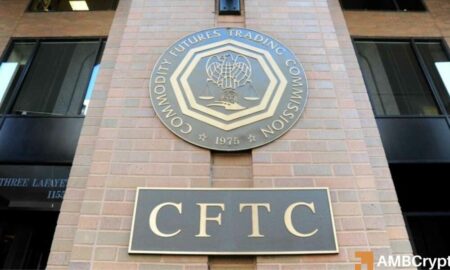Bitcoin’s Current Position: Analyzing Momentum and Market Dynamics
As Bitcoin [BTC] approaches the critical price level of $124,000, traders are closely observing its potential for sustained momentum. While recent trends indicate broad market participation, the fading growth in network activity raises questions about the cryptocurrency’s ability to maintain its upward trajectory. Since April, Bitcoin’s Age Cohort Concentration Index has dropped steadily, showcasing a diversification of holder groups, which supports the notion that price gains fueled by widespread participation tend to be more sustainable.
Historically, significant price movements supported by a diverse group of holders have been the foundation for lasting trends. As Bitcoin neared $118,000—close to its all-time high—the 90-day correlation between Bitcoin’s log-price and the HHI began to recover, indicating renewed strength. The current situation presents an intriguing balance: heightened trading volumes paired with decreasing concentration signals a potentially optimistic structural base. However, could this shift in behavior indicate the onset of a longer-lasting bull trend?
Bitcoin’s price action has been contained within an ascending channel since April, presenting notable resistance levels. Recently, Bitcoin rebounded around the $117,000 mark before retesting the critical resistance near $124,000, a level closely monitored by traders. The moving averages indicate a bullish alignment, and the MACD suggests positive momentum. Nevertheless, consistent rejections near this upper boundary show that sellers remain active, indicating a volatile market. Traders should brace for fluctuations as they await a decisive breakout.
As the retail market becomes increasingly optimistic, the Binance Long/Short Ratio reflects this sentiment, showing longs at 57.34% compared to shorts at 42.66%. This imbalance hints at a growing inclination among traders to bet on upward momentum. However, while bullish positioning is essential for price rallies, excessive long positions could trigger sharp corrections if the market turns against them. Additionally, with increased long exposure, funding costs could rise, potentially leading to overleveraged traders being forced out of their positions, exacerbating market volatility.
The decline in on-chain activity poses another challenge to Bitcoin’s momentum. Recent data reveals sharp drops in network growth and transaction counts, highlighting reduced participation. With mid-August figures showing network growth at 76.8k and transaction counts at 81.7k, the slowdown hints at waning demand and fewer new participants entering the market. Historically, declining on-chain activity has coincided with periods of cooling, even amidst bullish price movements. Despite a positive price trend, this downturn in network engagement raises concerns about sustainability if the trend continues.
Simultaneously, the Realized Cap HODL Waves reveal noteworthy shifts among Bitcoin holders, indicating evolving market dynamics. The percentage of coins held for 1 to 7 days has increased to 3.93% from lows below 2.5%, suggesting stronger short-term sentiment. In contrast, the 7 to 30-day cohort has decreased to 8.70% from more than 11% in early August, highlighting a reduction in mid-term holder exposure. This dynamic suggests that while short-term speculative activity may be increasing, it also makes the rally potentially fragile if mid-term conviction weakens.
Overall, Bitcoin is currently navigating a complex landscape characterized by strong technical structure and healthy distribution among holders. However, the simultaneous decline in on-chain activity raises critical questions about the cryptocurrency’s ability to sustain its ascent. Should mid-term accumulation continue alongside buyer interest in testing the $124,000 resistance level, a breakout could be imminent. Nonetheless, without renewed growth in network activity, the sustainability of Bitcoin’s rally may remain uncertain, warranting cautious optimism among traders.
![Zcash [ZEC]: Open Interest Reaches Multi-Month High – Is a Price Move On the Horizon?](https://icoinmarket.com/wp-content/uploads/2025/08/Kelvin-_90_-1000x600.webp-300x180.webp)







![Zcash [ZEC]: Open Interest Reaches Multi-Month High – Is a Price Move On the Horizon?](https://icoinmarket.com/wp-content/uploads/2025/08/Kelvin-_90_-1000x600.webp-450x270.webp)







